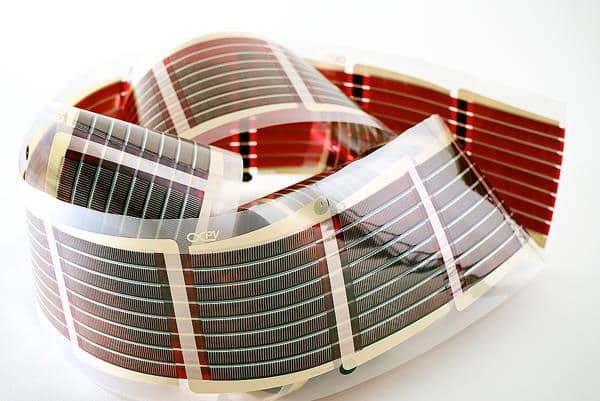When most people think of renewable energy solutions, they think of bulk panels installed on the roof or giant turbines spinning in fields. Sure, there are smaller options available to power lights beside our driveways and other small-scale energy operations, but these lightweight options aren’t going to produce any more power than standard batteries would.

But there is another solution, an invention called solar film that is made by printing cells on aluminium or plastic foil. These are then made available to be cut by the metre and used for a range of applications where bulky panels are not going to be of use.
That means it can be used in a lot of places and scenarios where regular panels are not ideal.
Solar foil can be installed at utility-scale at a very rapid pace
Normal solar installations require a lot of time and effort when it comes to large-scale projects. When you start thinking about solar solutions for hospitals, universities or military operations, you are talking about a lot of panels that need to be individually installed.
Solar foil makes perfect sense for these operations because they can be simply rolled out and attached without the need for extensive cabling or mounting supplies, delivering similar efficiencies for a fraction of the installation time and cost.
They are portable and can be used anywhere
For remote locations, shipping out solar solutions can be a challenge and expensive exercise. Solar foil can be rolled up and taken out to a site in a standard vehicle. You can even use adhesives to stick them almost anywhere, on windows or walls etc for instant power solutions.
These foils are very flexible
Another disadvantage that normal photovoltaic cells have is that they need to be assembled in bulky flat arrays. This is fine if you have the available space on your roof or elsewhere on your property but it is no good if you do not. Solar soil is flexible and can be wrapped around different, curved surfaces or attached to places that normal panels can not be so that you have more options available when it comes to installing renewable energy.
So what is the catch?
At this stage, you are not going to get the same efficiencies with solar foil as you would with regulation panels. The most you can expect from this foil is around 4 per cent compared to around 15-20 per cent.
That means you can use these foils to power basic appliances, lighting, USB charging and the like, but you are not going to be able to power a full job site or home at this stage. As technology improves, so too will the efficiency and there is great promise for the future.
Even at present, solar film is a portable, flexible option that can be installed by yourself that is going to provide you with renewable energy at any location which makes it very valuable to know about.












































